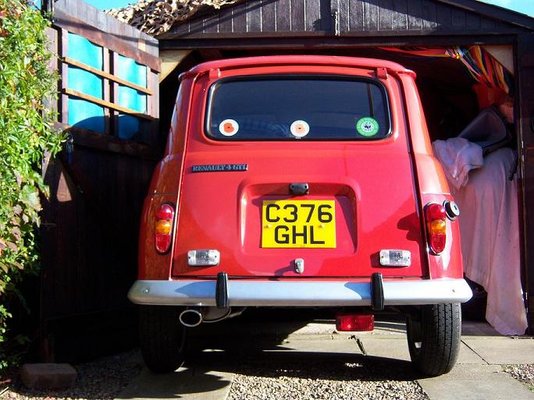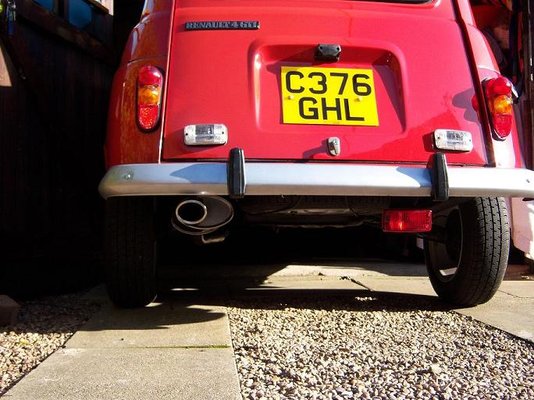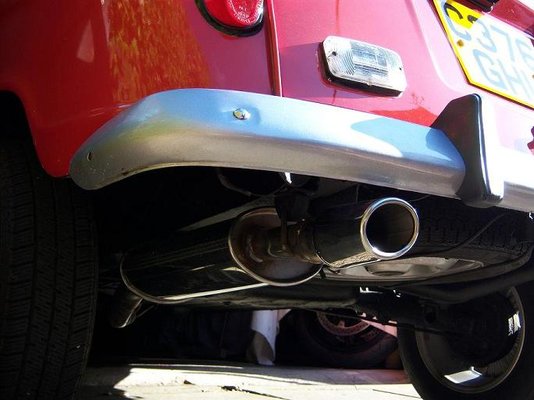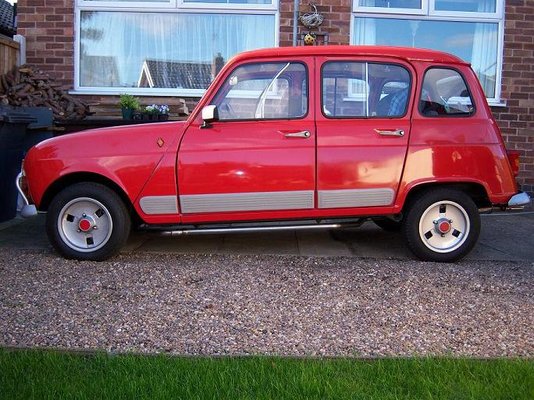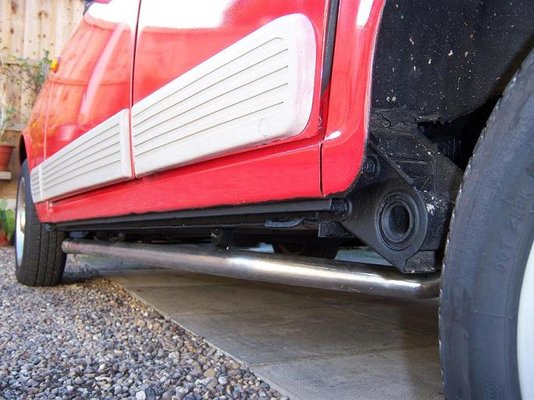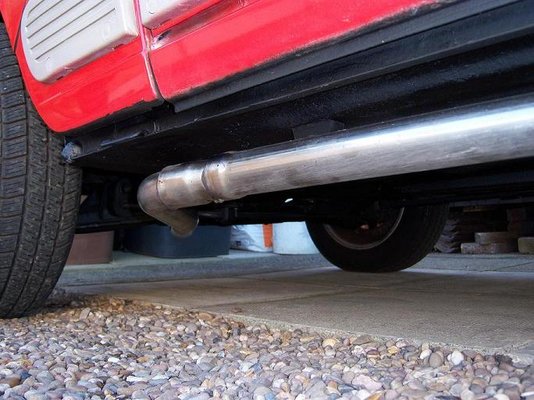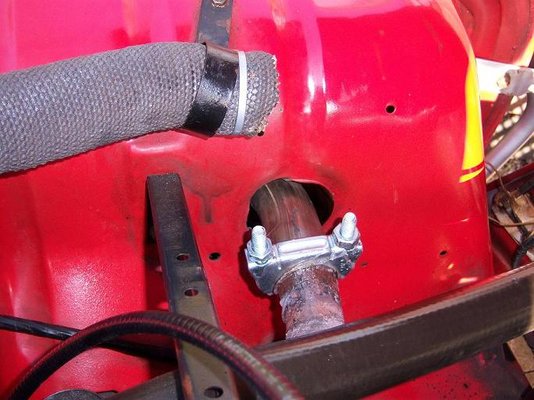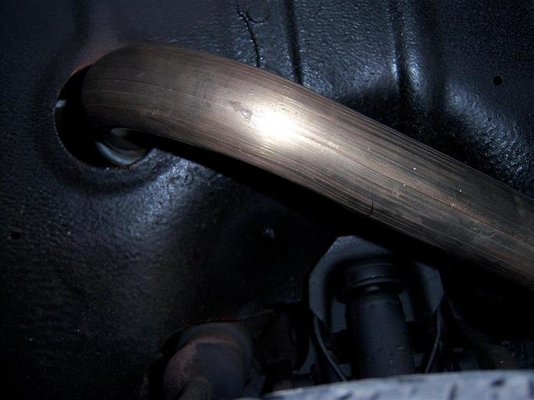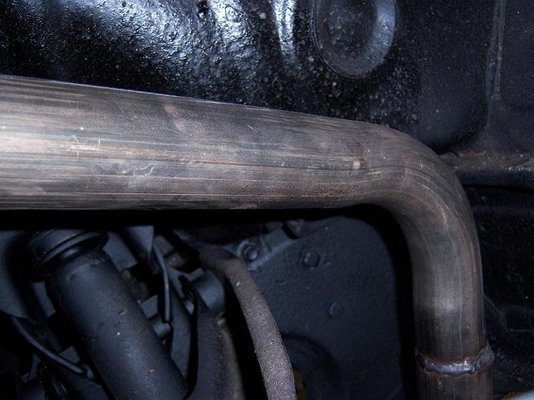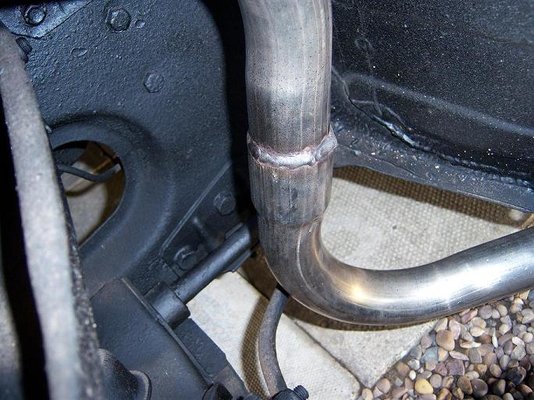Stainles steel exhaust.
Many thanks for your comments regarding the stainless steel exhaust.
Indeed there are advantages and disadvantages to both mild steel exhausts and stainless steel exhausts.
For a car that is used infrequently, condensation within the exhaust can be a problem. Mild steel exhausts will corrode from the inside when they are wet with condensation and damp exhaust soot, and an apparently new looking exhaust can, and will, rot from the inside on a car that has done relatively few miles. This does not happen with a stainless steel exhaust.
Cracks may occur when a stainless steel (or mild steel) exhaust is over clamped to the bodywork, i.e. the exhaust mounts are insufficient to provide damping to the vibrating exhaust against the fixed bodywork of the car. This results in the weaker of the two (the exhaust) being stressed with each vibration, in turn resulting in work hardening and cracking of the exhaust.
The continuing heating and cooling of an exhaust can also cause thermal stressing within the metal of an exhaust, which in turn can cause the metal to crack without the assistance of any vibrations. This may be a little more so for a stainless steel exhaust, which is a slightly harder metal.
However, a stainless steel exhaust that is properly fabricated and welded should not crack when supported correctly on the car.
Welds on a stainless steel exhaust will rust depending on the quality of the weld filler, a stainless steel exhaust welded with mild steel filler will rust at the weld. A weld made with good quality stainless steel filler with no impurities (i.e. mild steel) should not rust.
Mild steel exhausts are not worth repairing, they usually require repairing when they are rotten. Stainless steel exhausts can be repaired at any time, they do not rot and good metal is always available for the basis of a repair. A simple crack can be repaired with a small section of new pipe and good quality weld filler.
Regarding the sooting up. A mild steel exhaust will soot up far more quickly than a stainless steel exhaust, this is because the corrosion on the mild steel exhaust provides a good key for the soot to adhere to. The corrosion free stainless steel exhaust with its permanently smooth surface provides much less of a key and so reduces the sooting up process. As the soot itself will cause corrosion when damp, this accelerates the corrosion in a mild steel exhaust, while the stainless steel exhaust remains corrosion free. Corrosion along with failure at the corrosion points is usually the killer for mild steel exhausts.
Mild steel exhausts are not now stock items at most dealers, but are fairly easy to obtain, they are not so significantly cheap that a stainless steel exhaust should not be considered. A stainless steel exhaust is probably double the cost and very easy to obtain (there are many providers) as it is made on site either using the existing exhaust as a pattern or tailoring the new exhaust to suit. The stainless steel exhaust should outlast the mild steel exhaust by double the time, and so should prove cost effective, considering that it can also be repaired.
For me, and the nature of the way in which I may use a particular car, the advantages of having a stainless steel exhaust can far outweigh the advantages of a mild steel exhaust. I have had many cars over the years and of those I have intended keeping for a significant time I have usually replaced their standard exhaust with a stainless steel exhaust. I have also used a number of different suppliers for my stainless steel exhausts and to date (touch wood) I have not had a problem with a stainless steel exhaust from any supplier.
Lastly, the stainless steel exhaust looks and sounds loads (and loads) better it’s always clean and can be polished up too (if anyone is that fanatical).
For anyone considering a new exhaust, I recently had a Powerflow stainless steel exhaust fitted to my R4.
Powerflow have a number of outlets across the country and having asked around, I found that Brittania Exhausts in Derby are my local dealer. Brittania supplied and fitted the stainless steel exhaust to my car, I found them very helpful and currently (again touch wood) there are no problems.
However, I will keep you informed.
